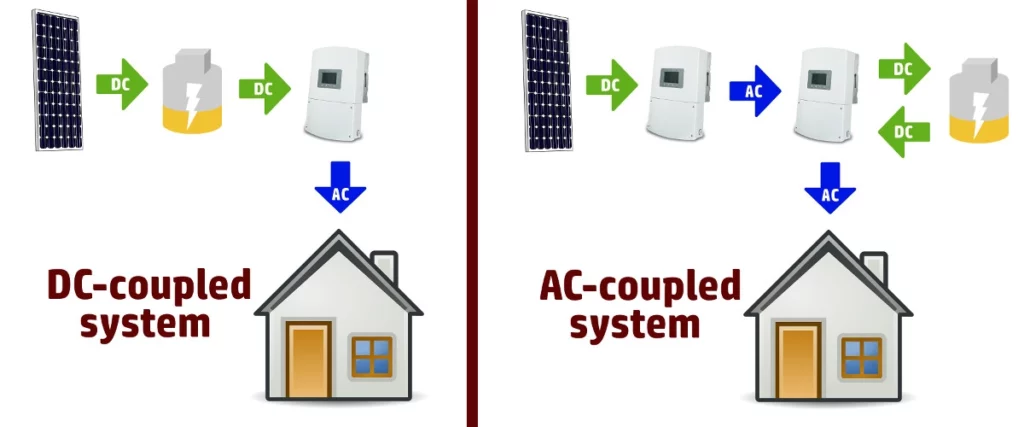AC or DC coupling refers to the way in which solar panels are coupled with and interact with a battery system. They are known as a DC (Direct Current) or AC (Alternating Current) system due to the electrical connection between the solar PV array and battery. The key distinction between an AC-coupled and DC-coupled battery systems lies in the journey the electricity takes once generated from the solar panels. As solar panels generate DC electricity, it must transform into AC electricity in order to power your home’s appliances. However, solar batteries store electricity in DC form.
Historically, AC-coupled battery storage systems have been more common for residential and commercial solar installations. But as more DC options become available, DC coupling is gaining in popularity.
In an AC-coupled system, DC electricity flows from your solar panels to an inverter. An inverter, transforms the electricity into AC electricity ready to power your home. However, if this energy isn’t needed, it then goes into another inverter that transforms it back into DC in order to store it into your solar battery. When this energy is in demand, it is then inverted again through an AC-to-DC power unit. This is so it is safe to use within our home appliances.
A DC system connects directly to your Solar Panels before your generation meter. In a DC-coupled system, Direct Current flows from your solar panels to a charge controller that feeds into your battery system. This means that any electricity generated by your solar panels, will be only inverted once from DC to AC. Either at the point where the current flows from your battery to your home, or from your battery to the National Grid.
More info on AC or DC coupling here



